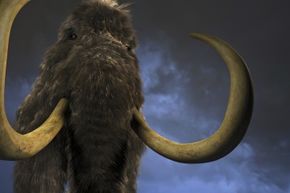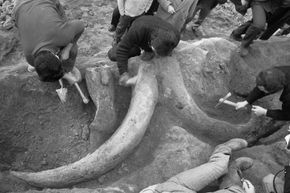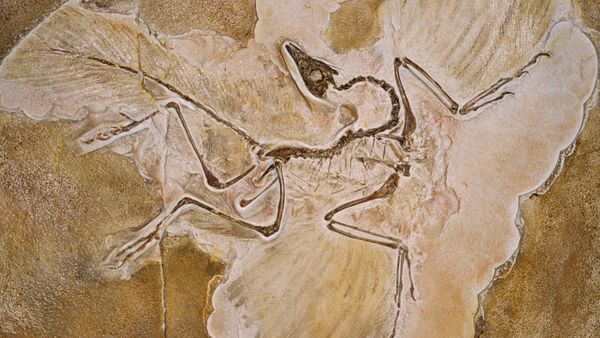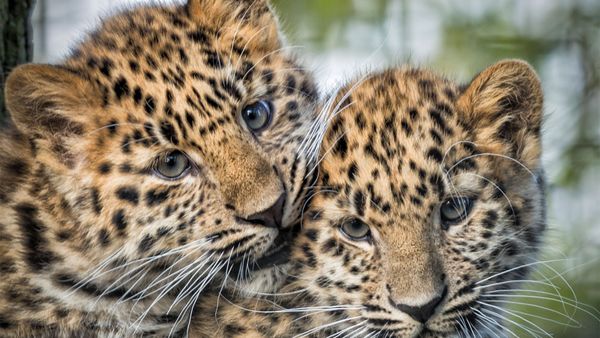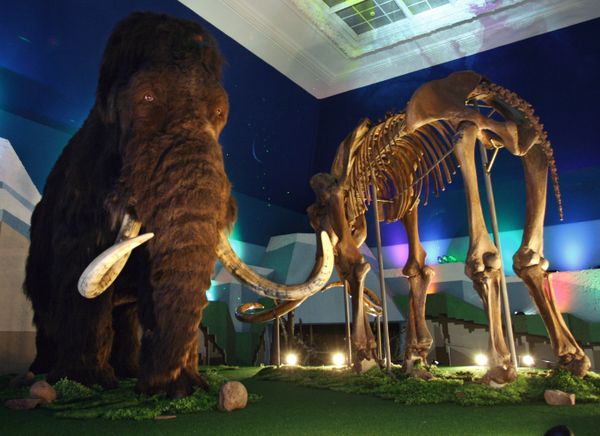Key Takeaways
- Woolly mammoths roamed the Earth during the Pleistocene epoch and were well adapted to cold climates with thick fur and fat layers.
- They coexisted with early humans who hunted them for food and used their bones for tools and shelter, which contributed to their extinction alongside climate change.
- Well-preserved remains have provided extensive insights into their biology, including DNA, which has fueled discussions about the possibility of de-extinction through cloning.
Travel back in time around 4,000 years to a remote Russian Arctic island, and you might see a few shaggy brown quadrupeds with trunks tugging up tufts of grassy ground cover and shoving them into their tusked mouths. But despite their four stout legs and thin, whipping tails, you would never mistake them for hairy elephants. Oh, sure, if your glasses broke on the trip, you might miss the distinctive downward slope of their backs, the fingerlike grippers on the ends of their trunks and their small, cold-adapted tail and ears.
But no amount of astigmatism could make you miss the fact that these animals are not much taller than you. For you have found the Wrangel Island mammoths, the dwarf descendant of Mammuthus primigenius, the woolly mammoth. They are the last of their kind.
Advertisement
Unlike the 25-percent-larger woollies that in their heyday numbered in the several millions across Eurasia and North America, these diminutive descendants survived the roughly south-to-north domino of extinction that had finished off so many large mammals more than 6,000 years earlier. They walked Wrangel Island when humans were building pyramids in Egypt and constructing Stonehenge in Great Britain. But soon, perhaps done in by the same forces that killed their ancestors -- likely climate change, human hunting or some combination of the two -- time would catch up with them as well [sources: Lister and Bahn; MGP].
We probably know more about woolly mammoths and mammoths in general than we do about any other extinct species. Compared to the last dinosaurs, which died out around 65 million years ago, mammoths only lately shuffled off this mortal coil -- recently enough that ancient humans hunted them, ate them, used their ivory for tools and depicted them in some of the earliest known sculpture and cave art [sources: Conard; Lister and Bahn; MGP]. Their well-preserved remains, which at times consist of complete carcasses pickled in frozen anaerobic soils, can contain muscle, blood, teeth, bone, tusk and even brain. We've even recovered and sequenced mammoth DNA [sources: Lister and Bahn; Mueller; Poinar].
What's more, we have three living, albeit distant, cousins to work with: two Loxodonta species, the African bush and African forest elephant, and one Elephas species, the Asian elephant, the mammoth's closest living relative [source: Krause et al.]. By combining what we know about modern elephants with evidence from woolly mammoth fossils, preserved stool and gut contents, and other physical evidence, we can confidently paint a picture of what these woolly wonders were really like -- and how they worked.
So jump back in that time machine, set the clock back a few hundred thousand years, and let's see what life was like when mammoths roamed Earth.
Advertisement
